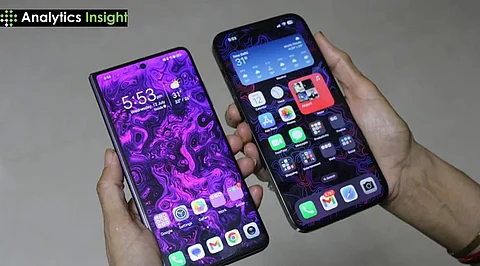

The smartphone wars have been raging for years, with two titans vying for dominance: it has always been the iPhone vs. Android battle. With vastly different ecosystems, features, and performance capabilities, choosing between these mobile giants can be daunting. In this comprehensive guide, we'll delve into the strengths and weaknesses of each platform, empowering you to make an informed decision that perfectly aligns with your unique needs and lifestyle.
The features that separate an iPhone from an Android are their mobile operating systems. While the former utilizes the proprietary Apple operating system, the latter uses Google Android for mobiles, which is popular among many manufacturers of Android phones.
StatCounter shows that the Android operating system dominated at least 69% of global smartphone users in September 2024, while Apple had 27%. This gigantic margin suggests that Android offered itself to more customers, though the iPhone’s iOS is not far behind. In fact, iOS is often criticized for being relatively sleeker and more basic than Android, which provides much more variety.
Design is one of the most valuable iPhone features, and Apple is globally acclaimed for its sleek, stylish look. The firm has garnered many loyal customers because its iPhone models are refined and have emphasized glass and metal parts that give them a classy feeling.
In contrast, Android phones are made by various companies, from Samsung to Google; therefore, there is a great variation in design. Samsung has its Galaxy series, which provides quality and is built similarly to the iPhone, while there are plastic ‘budget’ models.
iPhone and Android devices offer high performance, primarily in the premium variants. The iPhone is inclined explicitly towards its own house A-series of chips, which give first-class power and efficiency. Android, which has more devices running with the phones, comes with different processors. The newest Android instances, Qualcomm Snapdragon 8 Gen 3, are already competitive with Apple in terms of pure performance.
Both operating systems offer access to a massive range of apps via their respective stores: the Apple App Store and Google Play Store. However, a primary disadvantage of Apple’s App Store is that the review guidelines are stricter compared to Android, which makes most applications more trustworthy. There are also many Android apps, but their availability is less restricted for developers, which is why apps may be developed easily and quickly.
Additionally, research indicates that iPhone users are more likely to spend cash on application downloads than Android users. Sensor Tower’s seminar report for 2024 reveals that iOS users spend nearly double the amount that Android users do in the Play Store.
There is one area where Android has a significant advantage: the ability to set the right price. Although there are mostly high-end iPhones with models beginning with significantly higher price tags than the low-end Androids, Android users can opt for low-end devices, mid-tier phones, and high-end flagship phones.
iPhones, by contrast, typically hold greater resale value and are not as likely to degrade from wear and tear due to receiving firm software updates from Apple.
The choice between iPhone and Android depends on your individual priorities. If simplicity, seamless integration, and top-notch security are paramount, iPhone is the way to go. However, Android offers a compelling alternative if customization, affordability, and device diversity are more important. Ultimately, the smartphone comparison comes down to weighing your needs and preferences to find the perfect fit within the ecosystem that best aligns with your lifestyle.
